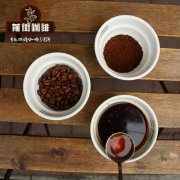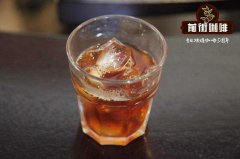How about Hawaiian coffee? What are the characteristics of Hawaiian coffee? Suitable for roasting degree of Hawaiian coffee

Professional coffee knowledge exchange more coffee bean information please follow the coffee workshop (Wechat official account cafe_style)
People always look for the best things, looking for the most mellow wine, the most charming cigars or the noblest champagne, etc., and coffee is the same, it is happy to drink good coffee, so people also begin to pursue better coffee, from the former Jamaica Blue Mountains or Hawaiian Kona to the most popular Rose Summer Coffee. People have also been pursuing the most distinctive and delicious coffee beans.
Jamaica Blue Mountain Blue Mountain
Jamaica Blue Mountain, known as Jamaica Blue Mountain Coffee in English, used to be all-powerful in competitions and bidding arenas. Its taste is very balanced and smooth. Because it is planted in the Blue Mountains of Jamaica, the top blue mountain coffee can only be grown at an altitude of more than 2000 meters. The Blue Mountains are the highest mountains around the Caribbean Sea, rich soil and high-altitude climate, bringing the special flavor of coffee here. Some people say that Blue Mountain can maintain a certain balance of taste at any temperature, while WALLENFORD, MAVIS BANK, SILVER HILL, MOY HALL and GOLD CUP are well-known estates of Blue Mountain Coffee.
The History of Blue Mountain Coffee
The history of Jamaican coffee can be traced back to the 18th century. The British introduced coffee trees to Jamaica and planted coffee in the Blue Mountains. Among them, it is divided into high-altitude pure blue mountain coffee, alpine blue mountain coffee beans, upper blue mountain coffee beans and low-altitude blue mountain coffee beans. Different grades also determine different prices.
Confrontation with Natural Climate & timely Assistance from Japan
And coffee, like all crops, depends on heaven for food. We, who belong to the island of Taiwan, which is often ravaged by typhoons, can better understand that a huge wind and rain may destroy the whole batch of crops, and Jamaica is also deeply affected by hurricanes. As long as there are hurricanes, they often lead to birth problems in the production of coffee beans, which are greatly affected in terms of taste and yield. Under such circumstances, the Japanese UCC company has helped to bring in a way of planting that can withstand hurricanes, so the Jamaican government, in gratitude for Japan's assistance, lets Japan buy Blue Mountain Coffee every year, and 70% to 80% of Blue Mountain Coffee is owned by Japanese first. In order to emulate the taste of Blue Mountain, other manors and countries have used coffee beans with similar tastes, but there is still a certain difference in taste, which is called Blue Mountain flavor or Blue Mountain mixed coffee. a real Blue Mountain will cost more than NT $1500 a pound.
Kona Hawaii Kona, Hawaii
The island can also produce boutique coffee
Hawaiian Kona, known as Hawaii Kona in English, must also be found in expensive coffee beans. Unexpectedly, Hawaiian Kona can grow amazing coffee beans on a holiday island in Hawaii. Kona coffee is divided into four top grades: Extra Fancy, Fancy, Prime and Gr. No.1, known as Hawaii, occupies a small area, so items are rarer and more expensive, and the price is as high as the Blue Mountain Coffee in Jamaica, in part because of labor. How to say that ? Most coffee farmers grow in third world countries, and their profits and benefits are often squeezed to circulate on the market at cheaper prices, but Hawaiian labor falls into the category of Americans, and natural costs rise.
The baking degree should be more palatable
The advice for roasting Kona coffee is not to roast it too deep, keeping it as light as Blue Mountain, because too much roasting will lose the sweet and sour taste of the coffee, which is the essence of Kona coffee. Many supermarket packaged Kona coffee beans are low-content mixtures. Before buying, you should pay careful attention to the percentage of Kona beans on the package, usually ranging from 10% to 50%. Many even add seasoning to fill the flavor, losing the opportunity to taste the original Kona flavor. Real Kona coffee, like other coffee beans, will mark the manor, batch number, weight, and handling.
Hawaii is the only coffee producing area in the United States.
Coffee plants were first introduced to Hawaii in 1817 during the reign of King Kamehameha, the first Spanish consultant, Don Francisco de Paula Marin. The planting was not successful, and in 1825 Oahu Mayor Chie Boki successfully introduced coffee from Brazil to Manoa Valley. Since then coffee has been grown all over the island. At present, there are about 950 farms growing coffee in Kauai, Oahu, Maui, Mokokai and Big Island, most of which are family-run small farmers, covering a total area of 7900 acres.
When it comes to Hawaiian coffee, most people think of KONA, but that coffee. In 1828, missionary Samuel Ruggles first planted coffee in the Kona area of the big island. To date, KONA Kona coffee production accounts for about half of Hawaii's total coffee production, with about 600 independent farms located in the north and south of Kona. But most of the coffee is grown in Manua
The west side of Loa and the slope of Hualailai volcano are mostly planted at low and middle elevations, about 3000-2000 feet. The volcanic area has always been famous for its black soil, which is moderately acidic and alkaline, is more rich in minerals, and helps to maintain soil water content. But the area is sunny early in the morning, and clouds begin to emerge at noon, which happens to keep coffee seedlings away from the hot afternoon sun, so it is said to be suitable for coffee pollination and flowering, contributing to the fruiting climate of coffee cherries.
Qianjie coffee is recommended to use 89-90 degrees water to make Hawaiian coffee, mellow taste, with some mulberry, jackfruit aftertaste.
Qianjie coffee: Guangzhou bakery, the store is small but a variety of beans, you can find a variety of unknown beans, but also provide online store services. Https://shop104210103.taobao.com
Important Notice :
前街咖啡 FrontStreet Coffee has moved to new addredd:
FrontStreet Coffee Address: 315,Donghua East Road,GuangZhou
Tel:020 38364473
- Prev

Resting treatment of San Pedro production area in Yauco Town, Yuco, Puerto Rico | the wind of washing beans with AA
Professional coffee knowledge exchange more coffee bean information please follow the coffee workshop (Wechat official account cafe_style) resting treatment in San Pedro production area, Yauco town, Yuke, Puerto Rico. | what is the flavor and brewing of AA washed beans? Puerto Rico is an autonomous territory of the United States in the Caribbean, with San Juan as its capital. In Spanish, Puerto Rico means affluence
- Next

The producing area of the Central Mountains of Madagascar | what is the flavor and cooking of Arabica washed in the northern mountains?
Professional coffee knowledge exchange more coffee bean information please follow the coffee workshop (Wechat official account cafe_style) Madagascar Central Mountains producing area | the northern mountain wash Arabica flavor and brewing? Madagascar (Madagascar) is basically a producer of Robbins Coffee, but plans to increase the cultivation of Arabica beans. The island has been on since 1989
Related
- Detailed explanation of Jadeite planting Land in Panamanian Jadeite Manor introduction to the grading system of Jadeite competitive bidding, Red bid, Green bid and Rose Summer
- Story of Coffee planting in Brenka region of Costa Rica Stonehenge Manor anaerobic heavy honey treatment of flavor mouth
- What's on the barrel of Blue Mountain Coffee beans?
- Can American coffee also pull flowers? How to use hot American style to pull out a good-looking pattern?
- Can you make a cold extract with coffee beans? What is the right proportion for cold-extracted coffee formula?
- Indonesian PWN Gold Mandrine Coffee Origin Features Flavor How to Chong? Mandolin coffee is American.
- A brief introduction to the flavor characteristics of Brazilian yellow bourbon coffee beans
- What is the effect of different water quality on the flavor of cold-extracted coffee? What kind of water is best for brewing coffee?
- Why do you think of Rose Summer whenever you mention Panamanian coffee?
- Introduction to the characteristics of authentic blue mountain coffee bean producing areas? What is the CIB Coffee Authority in Jamaica?

